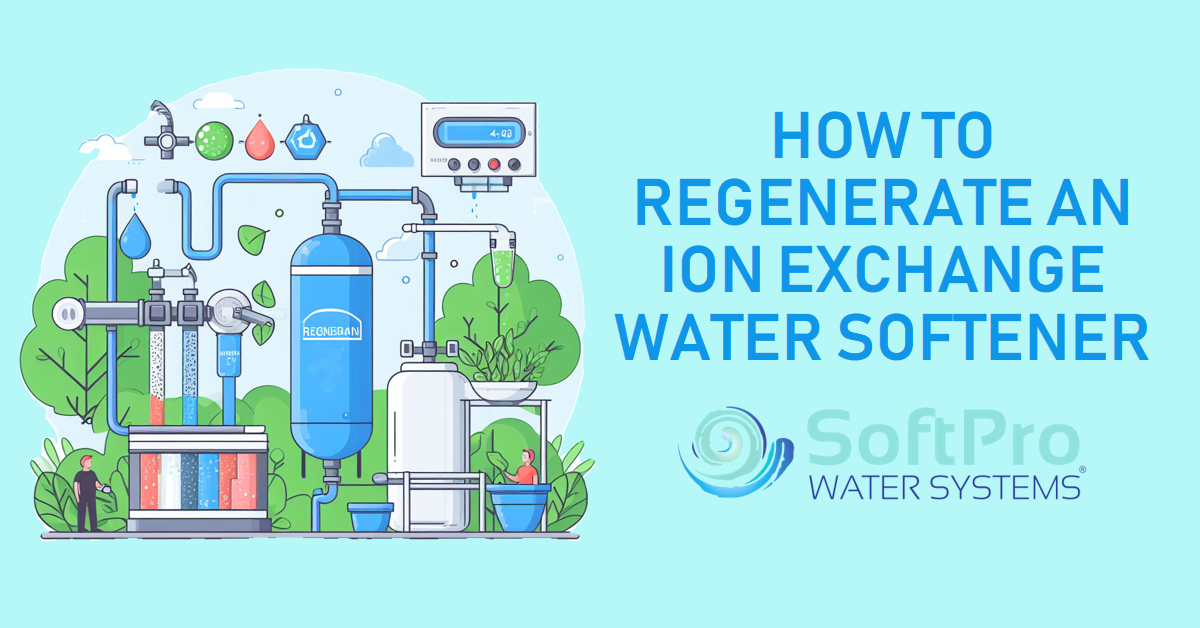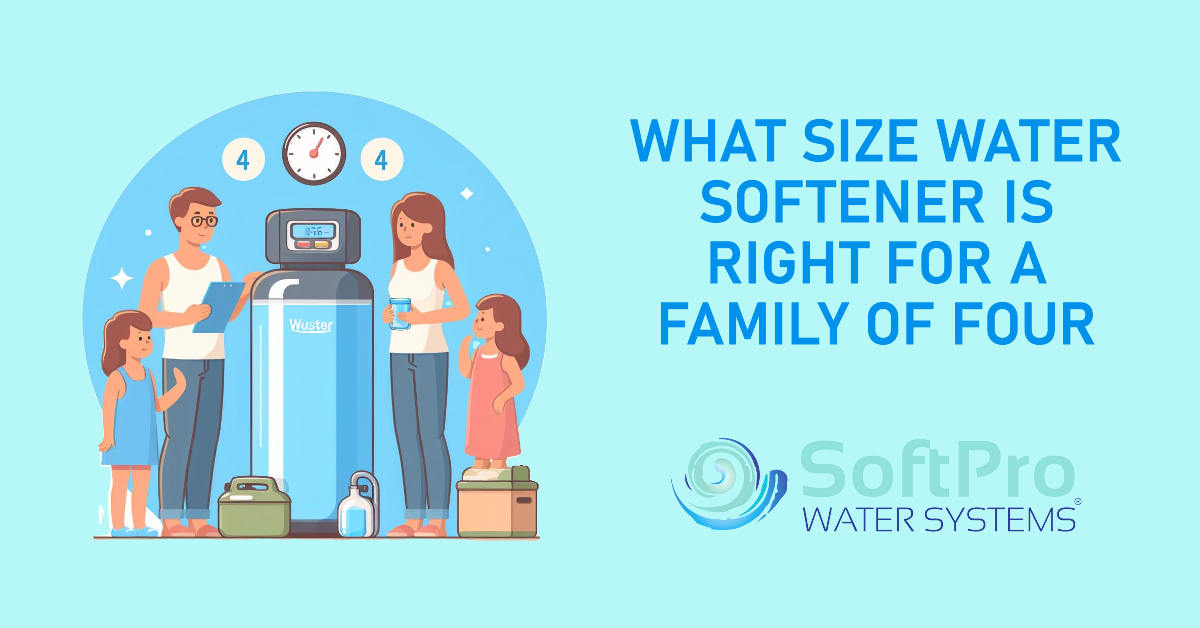How to Regenerate an Ion Exchange Water Softener?
Table of Contents
Regenerating your ion exchange water softener is a crucial step in maintaining its effectiveness and ensuring you enjoy soft, scale-free water. While the process may seem daunting at first, it's actually quite straightforward with the right knowledge and guidance. This comprehensive guide will equip you with everything you need to understand, diagnose, and perform water softener regeneration like a pro.
Why is regeneration necessary? Over time, the resin beads in your water softener become saturated with hard water minerals like calcium and magnesium. This reduces their ability to capture these minerals, leading to decreased water softening performance. Regeneration replenishes the resin beads, allowing them to effectively remove hard minerals once again.
How often should you regenerate? The frequency depends on several factors, including:
- Water hardness: Harder water requires more frequent regeneration. In areas with very hard water (greater than 250 ppm hardness), regeneration may be needed every few days. In softer water areas, regeneration may be needed only once a month.
- Water usage: The more water you use, the faster the resin beads become saturated.
- Softener capacity: Larger softeners have a higher capacity and require less frequent regeneration.
Signs your water softener needs regeneration:
- Decreased water pressure: Clogged resin beads can restrict water flow.
- Soapy residue: Hard water minerals can leave soap scum on your hands, dishes, and appliances.
- Scale buildup: Hard water minerals can form scale on faucets, fixtures, and appliances.
- Indicator lights or error messages: Some water softeners have indicator lights or error messages that signal the need for regeneration.
Understanding Your Water Softener
Before diving into the regeneration process, understanding the key components of your water softener is crucial. This knowledge empowers you to troubleshoot issues more effectively and perform targeted maintenance.
What is an Ion Exchange Water Softener?
At its core, an ion exchange water softener is a filtration system that removes hardness minerals like calcium and magnesium from your water. It achieves this through a fascinating process called ion exchange:
- Resin Tank: The heart of the system, the resin tank houses negatively charged resin beads. These beads contain sodium ions bound to their surface.
- Brine Tank: This optional tank (present in some models) stores a concentrated salt solution (brine) used for regenerating the resin beads.
- Control Valve: The brains of the operation, the control valve directs water flow through the different stages of the process, including softening and regeneration.
- Timer: In automatic models, the timer schedules automatic regeneration cycles based on pre-set intervals or water usage.
Types of Water Softeners Regeneration
Water softeners come in three main types, each with its own advantages and considerations:
- Automatic: The most convenient option, these softeners regenerate automatically according to the timer settings.
- Semi-automatic: These require manual initiation of the regeneration process, typically via a button or switch.
- Manual: Offering the most control, these softeners require manual adjustment of valves and salt settings throughout the regeneration cycle.
Identifying Your Water Softener
Understanding your specific water softener model is essential for accurate information and troubleshooting. Here's how to identify it:
- Locate the model number: Look for a label or sticker on the softener itself, usually near the control valve or brine tank.
- Consult the owner's manual: If you still have the manual, it will contain detailed information about your specific model, including specifications and regeneration instructions.
- Online resources: Manufacturer websites often offer support pages where you can enter your model number to find specific information and manuals.
Why and When to Regenerate: Monitoring Your Water Softener
Regenerating your water softener at the right time is crucial for optimal performance and preventing costly repairs. Knowing the signs and factors that dictate regeneration ensures your water remains soft and your softener operates efficiently.
Signs Your Water Softener Needs Regeneration
- Hard water issues: These are the most obvious indicators. If you notice soapy residue on hands and dishes, scale buildup on faucets and appliances, or decreased water pressure, it's likely time to regenerate.
- Flow rate changes: A noticeable decrease in water flow or increased time to fill containers points towards clogged resin beads requiring regeneration.
- Indicator lights and error messages: Many softeners come equipped with indicator lights or error messages specifically designed to alert you when regeneration is needed. Consult your owner's manual for specific meanings of these signals.
Determining Frequency Based on Water Hardness and Usage
The frequency of regeneration depends on two key factors:
- Water hardness: Harder water, containing higher levels of dissolved calcium and magnesium, saturates the resin beads faster, necessitating more frequent regeneration. In very hard water regions (above 250 ppm hardness), regeneration may be required every few days, while softer water areas might only need monthly cycles.
- Water usage: The more water you use, the faster the resin beads become saturated, demanding more frequent regeneration cycles. A family of four using an average of 150 gallons of water per day might require regeneration every week, while a single person in a low-usage household might only need it every month.
Testing Water Hardness
Knowing your water hardness is crucial for determining the ideal regeneration frequency. Here are some options:
- Test strips: readily available at home improvement stores, these strips provide a quick and affordable estimation of water hardness.
- Professional water testing: For more accurate results, consider contacting a water treatment company or municipality for a comprehensive water analysis.
Setting Timer Schedules
Automatic softeners allow setting timer schedules for convenient and automated regeneration. Factors to consider when setting the timer include:
- Water hardness: As mentioned earlier, harder water necessitates more frequent cycles.
- Water usage: Adjust the schedule based on your average water consumption.
- Manufacturer recommendations: Consult your softener's manual for specific timer setting suggestions based on your model and water conditions.
The Regeneration Process: A Step-by-Step Guide
With the groundwork laid, let's tackle the crux of the matter: the regeneration process itself. While specific steps may vary slightly depending on your water softener model, understanding the general sequence and key safety precautions empowers you to approach the task confidently.
Safety First: Essential Precautions Before You Begin
Before diving into the regeneration process, prioritizing your safety is paramount. Here are some crucial precautions to take:
- Power Supply Shutdown: Turn off the power supply to your water softener at the breaker box or main electrical panel. This prevents accidental electrical shocks during the process.
- Water Valve Shut-off: Locate the water inlet valve to your softener and shut it off to prevent water flow during regeneration. This minimizes the risk of leaks or flooding.
- Protective Gear: Wearing gloves and eye protection is recommended while handling salt and brine solution to avoid skin and eye irritation.
The 5 Regeneration Stages
Once safety measures are in place, you're ready to embark on the regeneration journey. Here's a breakdown of the key stages involved:
1. Backwash:
- The water flow direction reverses, pushing water upwards through the resin tank at a high rate. This dislodges accumulated sediment and iron, effectively cleaning the resin bed.
- Depending on your model, the backwash stage may last for 5-10 minutes.
2. Brine Draw (Optional)
- In models with separate brine tanks, brine solution is drawn into the resin tank. This concentrated salt solution helps replenish the sodium ions on the resin beads, restoring their ability to capture hard water minerals.
- This stage typically takes 5-15 minutes.
3. Brine Rinse
- Fresh water flows through the resin tank, washing away any remaining brine and ensuring a clean, soft water output.
- This stage can last anywhere from 5 to 10 minutes.
4. Fast Rinse (Optional)
- Some models may include a final fast rinse stage to further remove any lingering brine residue from the system.
- This stage typically takes 2-5 minutes.
5. Refill and Standby
- The system refills the brine tank (if applicable) and enters standby mode, ready to resume softening operations.
Additional Considerations:
-
Salt Level Monitoring: Regularly check the salt level in your brine tank (if applicable) and ensure it's adequately full for proper regeneration. Consult your manual for specific refill recommendations.
- Avoiding Over-regeneration: While timely regeneration is crucial, over-regenerating your softener can waste water and salt. Follow the manufacturer's recommendations and adjust the timer schedule based on your specific water conditions and usage.
Specific Model Guides: Tailoring the Process to Your Water Softener
While the general regeneration principles remain consistent across different models, specific steps and controls may vary. To ensure smooth and successful regeneration, diving into dedicated instructions for your specific water softener brand and series is invaluable. Here's a glimpse into some popular choices:
Whirlpool Water Softeners
- Popular Models: WHESL30ANR, WHESL50ANR, WHESL70ANR
- Regeneration Flow: These models typically follow a 4-stage regeneration process: Backwash, Brine Draw, Brine Rinse, and Refill. The control panel displays clear indicators for each stage. Manual regeneration is also possible via a dedicated button.
- Salt Level Monitoring: An indicator light on the control panel alerts you when salt levels are low and require refilling. Consult the manual for specific salt types and quantities recommended for your model.
Kenmore Water Softeners
- Popular Models: 53042, 53043, 53044
- Regeneration Scheduling: These models offer both automatic and manual regeneration options. The programmable timer allows setting custom schedules based on desired frequency or water usage.
- Regeneration Indicators: The control panel features LED lights indicating the current stage of regeneration and alerts you for any potential issues.
Culligan Water Softeners
- Popular Series: HE-Series, Medallion Series, AquaSense Series
- Diverse Models: Regeneration steps and controls may vary within each series. Consulting the specific model's manual is crucial for accurate instructions.
- Advanced Features: Some Culligan models offer advanced features like adjustable regeneration settings, leak detection systems, and water usage monitoring.
Remember, these are just examples, and the specific instructions for your model will differ. Always consult your owner's manual for detailed and accurate regeneration guidance for your exact water softener.
Troubleshooting Regeneration Issues: Conquering Common Hiccups
Even with proper understanding and preparation, occasional hiccups during regeneration are not uncommon. Fear not! Learning to identify and address these issues empowers you to take control and restore your water softener to optimal performance. Let's explore some common challenges and their solutions:
Regeneration Not Starting
- Power Supply: Ensure the power supply is turned on and the breaker box hasn't tripped.
- Timer Setting: Double-check the timer settings and confirm it's programmed for automatic regeneration if that's your preferred option.
- Sensor Error: Some models have sensors that detect water flow or resin capacity. Consult your manual for troubleshooting specific sensor-related issues.
Regeneration Taking Too Long
- Low Water Pressure: Verify adequate water pressure to the softener. Low pressure can slow down the regeneration process.
- Clogged Brine Line (if applicable): Check for blockages in the brine line that hinders brine solution flow. Refer to your manual for cleaning instructions.
- Faulty Control Valve: In rare cases, a malfunctioning control valve can disrupt the regeneration cycle. Consider consulting a professional plumber for diagnosis and repair.
Salty Water After Regeneration
- Inadequate Rinse Cycle: This can occur if the brine rinse stage was interrupted or malfunctioned. Run a manual regeneration cycle to ensure thorough rinsing.
- Overfilled Brine Tank: Check the brine tank level and ensure it's not overfilled, as this can lead to residual brine in the system.
- Leaking Injector Valve: A leaking injector valve can mix brine with softened water. Consult your manual for identifying and replacing the injector valve if necessary.
Water Softener Not Softening Water
- Exhausted Resin: Over time, the resin loses its capacity to capture hard minerals. If regeneration doesn't resolve the issue, consider a resin replacement, consulting a qualified technician if needed.
- Bypassing Error: Ensure the bypass valve is in the correct position, allowing water to flow through the softener.
- Incorrect Settings: Verify the salt settings and timer schedule are appropriate for your water hardness and usage.
If you encounter persistent problems beyond your expertise, seeking professional help from a qualified plumber or water softener technician is recommended. They possess the tools and knowledge to diagnose and address complex issues efficiently.
Maintaining and Optimizing Your Water Softener: Beyond Regeneration
While thorough regeneration is crucial for keeping your water softener in top shape, several additional maintenance practices can prolong its lifespan, enhance its performance, and maximize its efficiency. Let's explore some key steps you can take beyond the regeneration cycle:
Regular Cleaning and Inspection
- Salt Tank Maintenance: Regularly inspect the brine tank for debris, sediment buildup, or leaks. Clean the tank as needed following manufacturer instructions.
- Mineral Buildup Removal: Check for mineral buildup around the control valve and other components. Clean these areas periodically with a vinegar solution or other demineralization products recommended by your manufacturer.
- Sediment Filter Replacement: If your water softener has a sediment filter, replace it at recommended intervals to ensure optimal water flow and prevent clogging.
Salt Management
- Salt Selection: Use high-quality water softener salt, typically in pellet form, to avoid clumping and clogging issues. Avoid using cheaper alternatives like rock salt or solar salt, as they can damage the system.
- Salt Level Monitoring: Regularly check the salt level in your brine tank and ensure it's never empty. Running the softener with low salt can significantly reduce its effectiveness.
- Water Efficiency Measures: Using eco-friendly salt settings and adjusting the timer schedule based on your actual water usage can help optimize salt consumption and minimize waste.
Performance Monitoring and Adjustments
- Water Hardness Testing: Periodically test your water hardness (every 6 months to a year) to ensure your softener settings are properly adjusted for optimal performance.
- Water Flow Monitoring: Keep an eye on water pressure and flow rate. A noticeable decrease could indicate clogged resin or other issues requiring diagnosis and potential repairs.
- Leak Detection: Regularly inspect your softener system for leaks, especially around connections and valves. Promptly address any leaks to prevent water damage and costly repairs.
Professional Maintenance
- Annual Inspections: Consider scheduling annual inspections by a qualified water softener technician. They can check overall system health, identify potential issues before they become major problems, and recommend preventive maintenance measures.
- Warranty Coverage: Familiarize yourself with your water softener's warranty terms and conditions. Schedule timely service or repairs during the warranty period to avoid incurring unnecessary costs.
Conclusion: Water Softener Regeneration - Enjoying Soft Water with Confidence
Understanding and effectively managing your water softener's regeneration process empowers you to unlock a world of soft, scale-free water for your home. By adhering to the key takeaways outlined below, you can ensure your softener operates at peak efficiency, delivering optimal performance and longevity.
Key Takeaways:
- Regenerate when needed: Monitor water flow rate, water hardness levels, and indicator lights for signs your softener needs a refresh.
- Frequency matters: Adjust regeneration frequency based on water hardness and usage. Hard water regions and high water consumption require more frequent cycles.
- Safety first: Always prioritize safety by turning off power and water supply before starting the regeneration process.
- Follow the steps: Familiarize yourself with your specific model's regeneration process and adhere to the recommended steps.
- Maintain and optimize: Regular cleaning, salt level monitoring, and performance monitoring can extend your softener's lifespan and prevent costly repairs.
Beyond Regeneration: Optimizing Your Water Softener
Maintaining a healthy and efficient water softener extends beyond the regeneration cycle. By incorporating these additional practices, you can maximize value and enjoy soft water for years to come:
- Clean regularly: Schedule routine cleaning of the brine tank, control valve, and other components to prevent buildup and ensure optimal flow.
- Monitor salt levels: Never let your brine tank run empty to maintain consistent regeneration and avoid damaging the system.
- Test water hardness: Periodic testing helps ensure your softener settings are adjusted for optimal performance in changing water conditions.
- Seek professional help: Schedule annual inspections by a qualified technician for comprehensive system checks and preventive maintenance.




![SoftPro Chlorine+ Carbon Whole House Water Filter to Remove PFAS, Chlorine, Chloramine & Pesticides [City Water Filters Series]](http://www.softprowatersystems.com/cdn/shop/products/softpro-whole-house-chlorine-filter-282008.jpg?v=1758858973&width=140)
![SoftPro Iron Filter - Iron Master AIO - Best Iron Filter for Well Water [Air Injected Water Filter / Katalox]](http://www.softprowatersystems.com/cdn/shop/products/softpro-iron-master-aio-water-filtration-system-remove-iron-sulfur-manganese-using-air-injection-for-optimal-performance-412868.jpg?v=1758859831&width=140)













